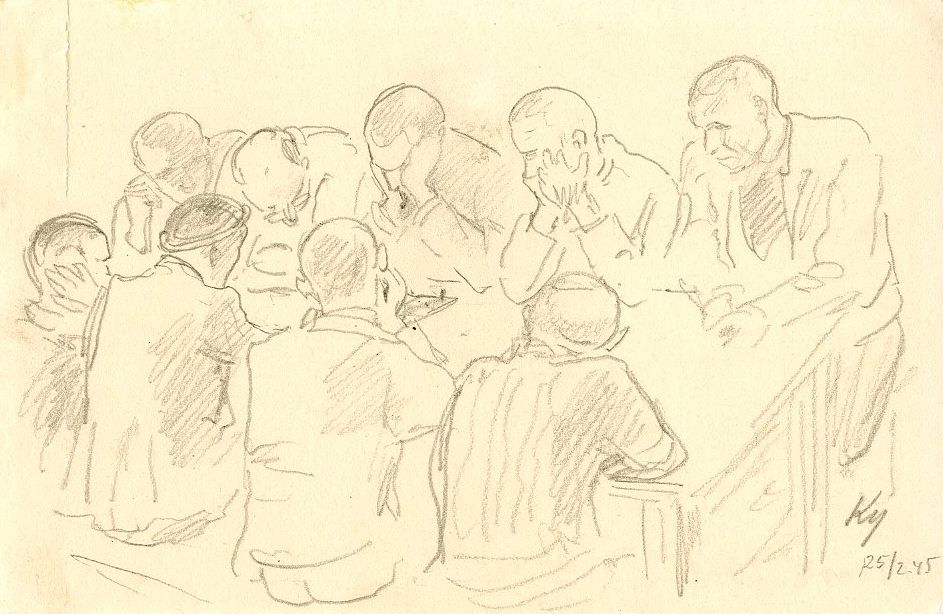

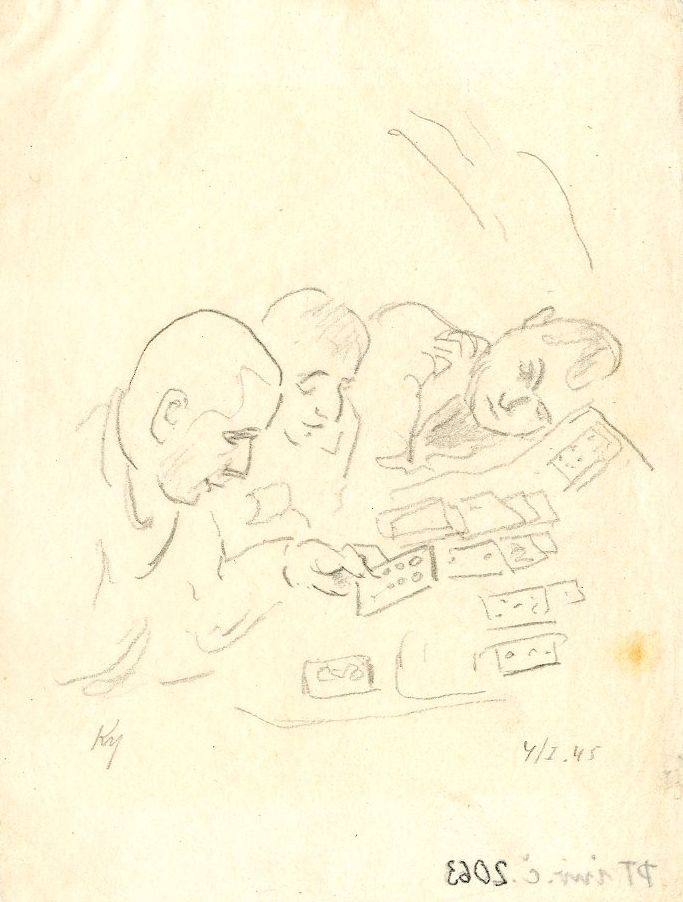
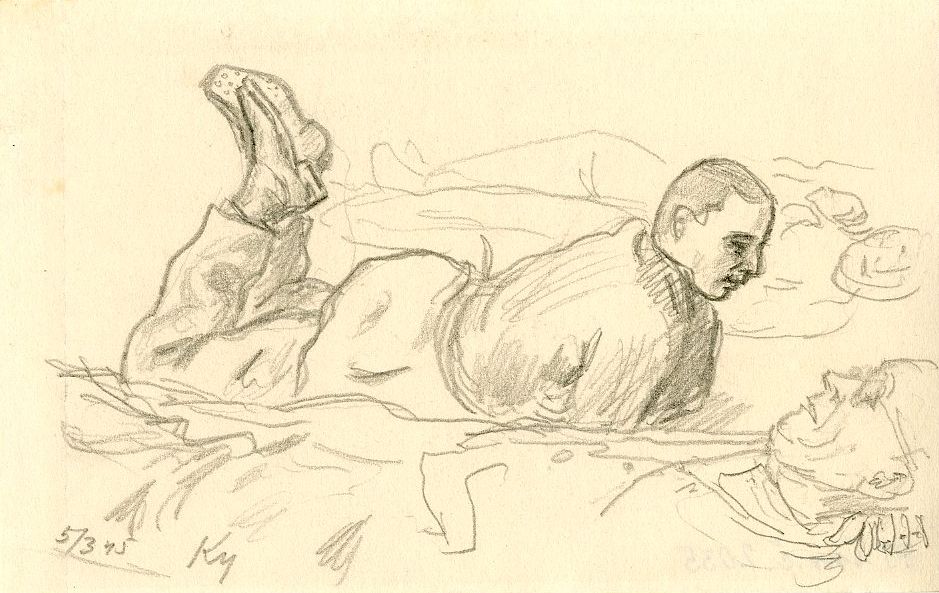
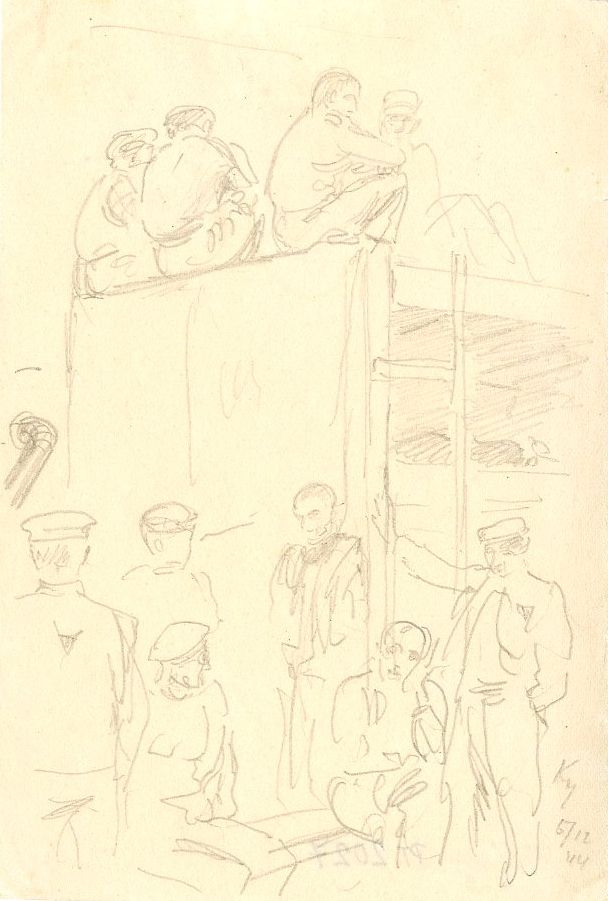
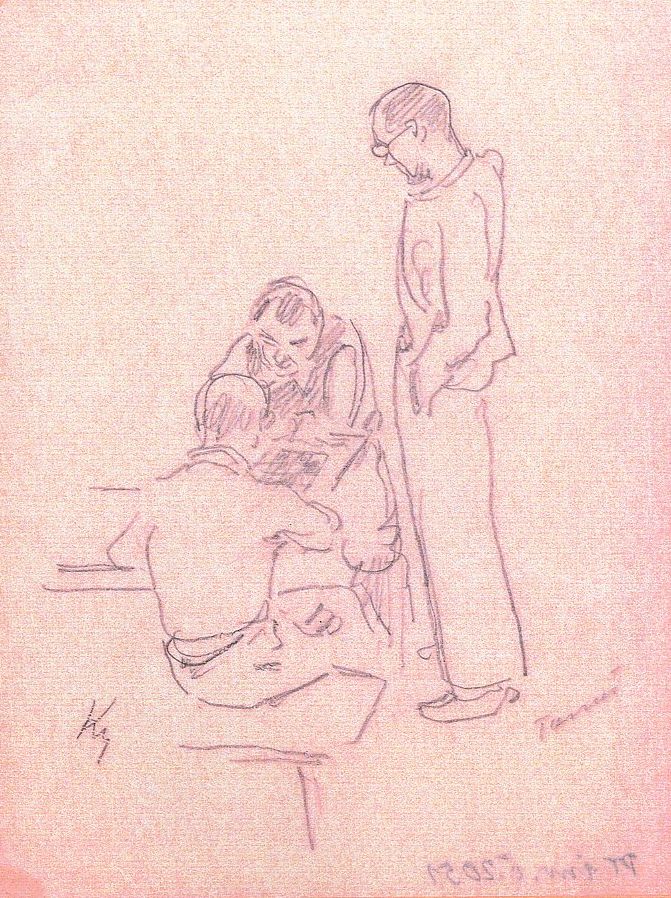
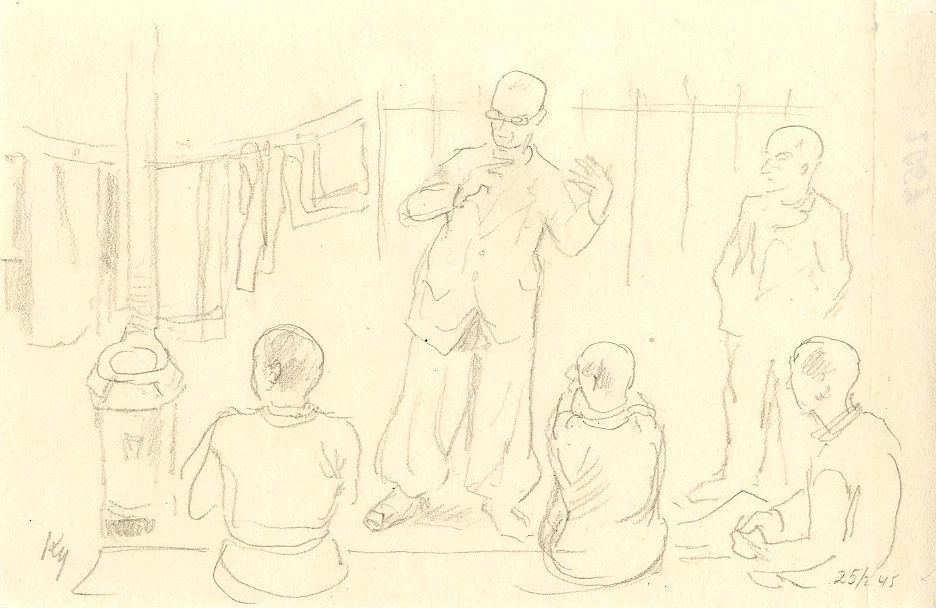
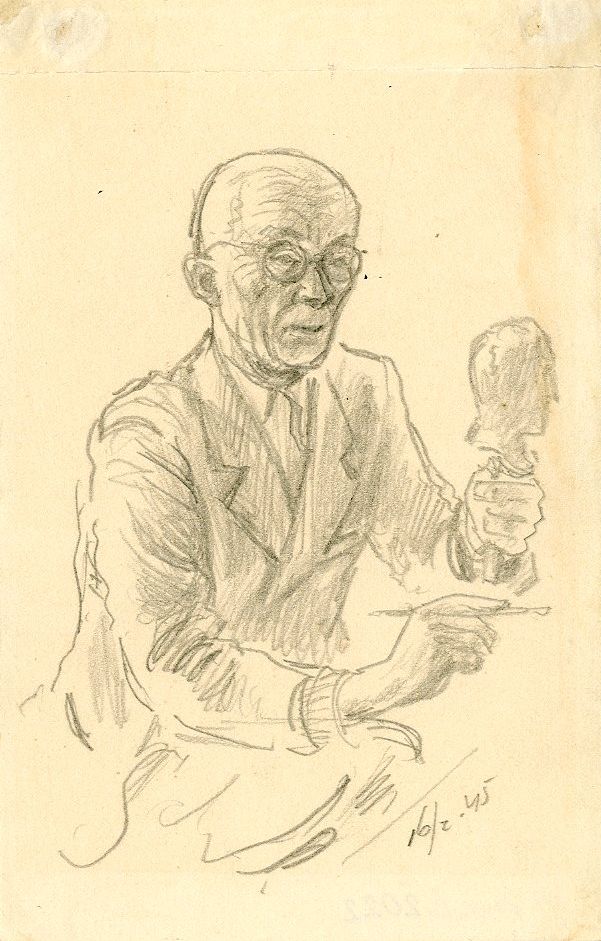

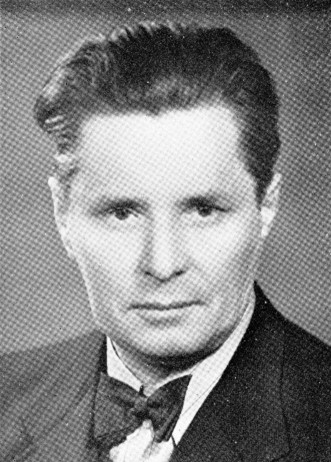
Josef Kylies came into the Gestapo’s spotlight during the Nazi occupation due to his art which displayed a visible patriotic bias and willingness to help people in need. After being denounced to the Gestapo, he was taken into custody on September 20, 1944. He was then transferred from the Kladno Gestapo office to the prison in the Small Fortress Terezín on October 12. Even while in prison, Kylie did not lose heart; on the contrary, he tried his best to assist and uplift others. He continued to pursue his cultural and educational activities in the Fortress, giving lectures on different subjects virtually every evening. He was even able to convince many of his fellow inmates to participate in the lectures, and also drew a lot, portraying the hard everyday life in the Small Fortress. He specialized in making portraits, striving to capture the true likeness of the most vulnerable and suffering prisoners in particular. In mid-March 1945, Josef Kylies was transferred to the Fourth Courtyard of the Small Fortress where he contracted spotted fever, then spreading in the camp. However, his family obtained permission to transfer him to Slaný hospital, where he was admitted on May 4, 1945. Kylies successfully overcame the disease and returned to regular life after a period of recovery at Vráž in September 1945. Once again, he was engulfed by cultural activities, organizing art exhibitions, writing, and making illustrations. Unfortunately, the hardship of his imprisonment caught up with him, and he fell ill with tuberculosis. He was unable to fight the disease for long, and he passed away on June 16, 1946.